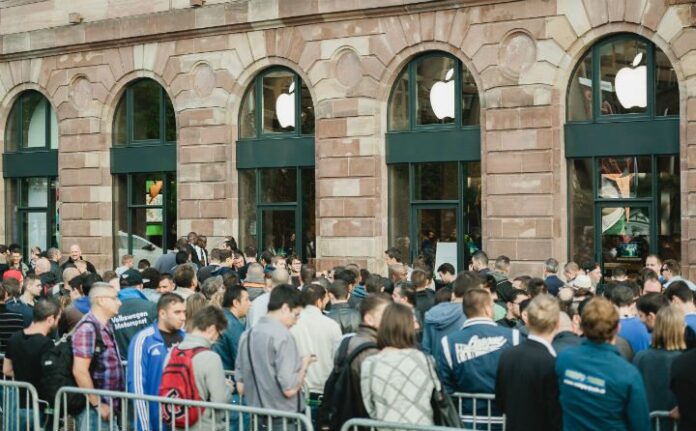Analyst predicts Apple could dive into the device leasing space inhabited by Sprint and T-Mobile US
The move by domestic mobile operators toward device leasing programs could spill over into the original equipment manufacturer market, with one analyst seeing Apple tapping into such channels in its battle against Chinese vendors for market share.
The analysis comes just ahead of Apple’s expected release of its latest iPhone iteration expected for Sept. 9.
As part of a recent note discussing financial benefits of device leasing programs for mobile operators, Macquarie Capital analyst Kevin Smithen also explained a potential benefit for Apple, which remains a dominant player in the smartphone space, although it has seen some market share begin to leak toward Chinese vendors.
Smithen explained that the device leasing programs, some of which have specifically targeted Apple devices, could allow the device maker to maintain a premium pricing and branding strategy while still allowing consumers a lower price point into the iPhone of their choice.
Sprint recently updated its leasing program in response to the launch of a program by T-Mobile US. So far, Verizon Wireless and AT&T Mobility have not moved toward device leasing programs, sticking instead with their EIP offers.
Device leasing programs typically have a fixed term with consumers not having to put any money down and paying a flat rate per month that is typically less than they would pay with an equipment installment plan, but having to turn in that device at the end of the lease toward a lease renewal on a new device. However, even that model typically had consumers waiting until their device was paid off before signing up for a new one.
“Sprint’s ‘iPhone for Life’ and other industry leasing plans are much better for Apple than EIP plans because they force the consumer to turn in the phone and upgrade after two years rather than allowing the customer to keep the device as in EIP,” Smithen wrote. “This should drive higher iPhone sales regardless of product innovations.”
That last point could be a compelling point for Apple as many have noted a slowdown in the innovative aspect of the company’s more recent iPhone models beyond the last model’s move toward a larger screen size.
Apple had previously attempted to hit a lower price point with its iPhone 5C model that launched in connection with the 5S model in 2013. Those devices included more plastic in their composition, a slightly lower internal technology specification and came in about $100 less than the 5S model. Despite the down-market move, the 5S model handily outsold the 5C model, which has not seen any update since its launch in 2013.
For higher-end smartphones, there remains a hot market for used devices, which allows the carrier to regain some of the costs of device leasing programs by pushing the used device through a refurbishment program.
Smithen also noted that Apple could itself make a move into running a lease program, which would allow the carrier to both “sale” new devices as well as recapture any residual value from those devices being turned in.
“By setting up ‘LeaseCo’ arrangements with the ‘Big 4’ U.S. carriers, Apple could benefit in two ways: first, by keeping the upgrade rate from extending, Apple could perhaps sell [5 million to 7 million] more new units per year in the U.S.; second, Apple could gain control of the used iPhone inventory and then sell the ‘certified’ used phones for $200 to $350 into the [international] or U.S. prepaid [markets],” Smithen explained. “Because of this potential windfall on the residual value, we believe that Apple may be able to incentivize the consumer to switch to leasing plans by offering discounted or free lease payments for a few months. The carriers would benefit from not having to tie-up equity in the LeaseCos and the consumer would benefit from getting a new phone every two years.”
Smithen added that if such an arrangement was implemented immediately by Apple, the company would likely begin to see a financial benefit beginning with the launch of a new model in late 2016.
Caroline Gabriel, research director and co-founder of Rethink Technology Research, said Apple could in turn use the influx of off-lease devices to resale still in-demand phones at a discounted price that would help the carrier battle Chinese manufacturers that are beginning to make headway into the lower- and mid-tier smartphone market.
“This could be an ingenious way to address Apple’s ongoing dilemma – whether to fight back against the market share growth of well-priced Chinese smartphones by reducing its own prices, but risk devaluing its premium brand among the highest value customers,” Gabriel said. “It made a half-hearted move in that direction when it split the iPhone into two models per generation, but the first example, the iPhone 5C, was still too expensive to gain significant new users in emerging markets. A leasing program, similar to those which carmakers use to get new models onto the road rapidly via rental firm and enterprise deals, would help kick-start early shipments of new iPhones.”
Bored? Why not follow me on Twitter

